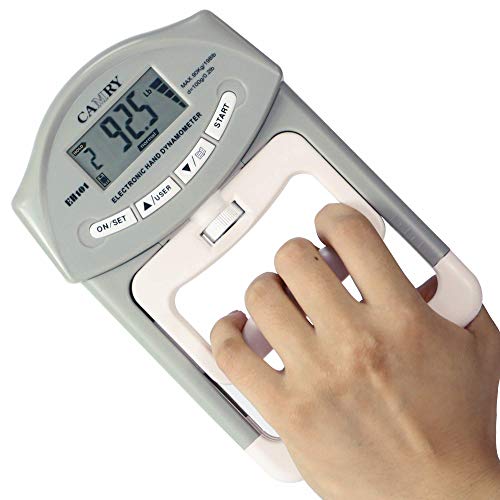
Having a strong grip provides immense benefits for athletes, regular gym-goers, and people in all walks of life. The hands and forearms are used constantly throughout the day, yet this area is often neglected in training routines. We will explore the advantages of grip strengthening, the most effective grip strengthening exercises, and tips for incorporating grip work into your training.
Why Develop a Strong Grip?
There are several key reasons to devote effort toward developing hand and forearm strength:
- Injury prevention – A weak grip can lead to pain and strain in the hands, wrists, and forearms due to overuse and imbalance. Building grip strength protects these delicate joints.
- Enhanced sports performance – A solid grip is crucial for tennis, golf, baseball, rock climbing, and weightlifting. Greater grip strength allows for stronger swings, and better performance.
- Improve weight training – Gripping the bar is the limiting factor for many exercisers in pulling exercises like deadlifts and rows. Boosting grip strength enables the back and arms to work harder.
- Carryover to daily life – A robust grip makes regular tasks like opening jars, using tools, and carrying bags much easier and less stressful on the hands.
- Display of overall power – Strong hands and bulging forearms signal an athlete’s overall conditioning and strength to competitors. Popeye arms are the mark of someone not to be trifled with!
Best Grip Strengthening Exercises
Let’s explore some of the most effective exercises to develop finger, hand, wrist, and forearm strength:
Farmer’s Walks
This exercise simulates the real-life task of carrying heavy objects over distance. Grab a pair of heavy dumbbells or specially made farmer’s handles and walk for time or distance. Keep the core braced and grip as forcefully as possible. Farmer’s walks target the entire grip complex as you battle to keep hold of the weight.
Wrist Curls
Wrist curls directly work the flexor muscles on the underside of the forearm. Kneel on a bench holding a dumbbell or wrist roller with palms up. Keeping the upper arm still, slowly curl the weight towards the ceiling by flexing the wrist. Lower under control to complete a rep. Reverse the movement, curling towards the floor, to also train wrist extension.
Plate Pinches
Grip a weight plate vertically between your thumb on one side and fingers on the other. Lift the plate off the floor and hold for time. See how long you can suspend the plate before having to drop it. This builds tremendous crushing strength through the fingers and hand.
Fat Gripz
These special grips wrap around barbells and dumbbells to thicken the grip diameter. The larger grip forces the hands to work harder to hang on to the implement, providing grip work during regular training. Fat Gripz boost grip strength and forearm activation during exercises like curls, rows, and deadlifts.
Wrist Rollers
Wrist rollers provide dynamic concentric and eccentric wrist work. Wind rope attached to a bar or dumbbell around a spool. Hold the spool steady and roll the weight up by flexing the wrist, then control the descent. Do multiple reps, then switch directions. Wrist rollers can be done one arm at a time or bilaterally.
Towel Curls and Extensions
Wrap a towel around a barbell then grip the towel-covered bar with thumbs around the bar. Perform arm curls and/or extensions while squeezing continuously on the towel to prevent it from unraveling. The unstable, awkward grip forces the hands and forearms to contract strongly throughout the set.
Grip Training Equipment
In addition to bodyweight exercises, there are various grip-strengthening tools that can intensify your training. Here are some of the best equipment options:
Grippers – These handheld devices have two handles connected by springs. Squeezing them shut builds crushing strength. Popular brands are IronMind and Grip Genie.
Thick Bar Handles – Bars with a thicker diameter require more grip effort. FatGripz grips can convert standard bars into thick bars. Rolling Thunder bars are excellent thick bar options.
Wrist Rollers – A weight is suspended on a rope that winds around a spool. Rolling the weight up and down dynamically trains wrist flexion and extension. Look for adjustable wrist rollers to increase resistance.
Pinch Blocks – Pinch grip two smooth wooden blocks between your fingers and thumb. Lift and hold for time. Intensifies pinching strength.
Finger Trainers – These small devices have springs or elastic bands to strengthen individual fingers. Great for injury rehab and climbing training.
Farmer’s Walk Handles – Specialized bars designed for farmer’s walks. The centered weight placement challenges grip endurance. Titex and Rogue make excellent farmer’s walk handles.
Incorporating a couple of these tools into your grip sessions will give you new angles of resistance for better strength gains. Be sure to increase weight and resistance gradually over time.
Sample Grip Training Routine
To build hand and forearm strength efficiently, try structuring your grip workouts like this:
Day 1 (Mondays)
- Plate pinches – 3 sets x 20-30 sec holds
- Farmer’s walks – 5 sets x 50 ft
- Wrist curls – 3 sets x 10 reps
- Forearm stretches – 2-3 sets x 30 sec
Day 2 (Thursdays)
- Fat Gripz deadlifts – 5 sets x 5 reps
- Towel pull-ups – 3 sets x 8 reps
- Plate pinches – 3 sets x 20-30 sec holds
- Forearm stretches – 2-3 sets x 30 sec
Integrating Grip Work On upper body days, do grip exercises in between sets of your regular training. For example, between sets of bench press, perform plate pinches or wrist curls as a superset. Or alternate between sets of barbell curls and towel chin-ups.
On lower body days, wear Fat Gripz during your main lifts. The thicker bar challenges your grip throughout squats, deadlifts, etc.
Dedicate just 10-15 minutes, 2 times per week, to concentrated grip work for big strength gains over time. Be patient and keep at it!
Testing Your Grip Strength
It’s essential to regularly test your grip strength to gauge progress and adjust your training accordingly. Here are some practical ways to test:
Hand Grip Dynamometer – This tool measures grip force as you squeeze. Results are measured in either kilograms or pounds of force. Test both hands to compare.
Captains of Crush Grippers – This gripper series has different resistance levels. Closing each gripper indicates your crushing strength. Work your way up through the series.
Plate Pinch Weight – Note the maximum size plate you can pinch grip, and hold for time. Increase the plate size as grip gets stronger.
Deadlift and Pull-up Max – Your rep maxes on pulling exercises indirectly indicate functional grip strength.
Rice Bucket Exercises – How long you can manipulate rice indicates dexterity and finger/hand endurance.
Fingerboard Hangs – Track increased hang times on small rock climbing holds to gauge finger strength.
Testing your grip 1-2 times per month will help you clearly see your progress over time. Be patient – significant grip gains often take several months. Stay focused and keep training!
Prevent Injury with Wrist and Forearm Stretches
Grip training can place a lot of repetitive stress on the wrists and forearms. It’s important to incorporate flexibility work to minimize injury risk. Try these effective stretches:
Wrist Flexor Stretch – Extend your arm straight out with your palm down. Use the other hand to gently pull back the fingers towards the forearm until a stretch is felt. Hold for 30 seconds, relax, and repeat.
Wrist Extensor Stretch – Extend your arm straight out with your palm up. Use the other hand to gently pull back the fingers towards the forearm until a stretch is felt. Hold for 30 seconds, relax, and repeat.
Forearm Stretch – Interlace your fingers together with palms facing outward and straighten your arms in front of you. Slowly rotate hands inward until a stretch is felt along the forearms. Hold for 30 seconds.
Finger Flexion Stretch – Start with fingers straight. Use your other hand to bend each finger back until a mild stretch is felt in the finger flexors. Hold for 20 seconds per finger.
Perform 2-3 sets of these stretches after grip sessions. Proper wrist and forearm flexibility will help recovery and prevent overuse injuries like tendinitis.
Nutrition for Grip and Connective Tissue Health
Proper nutrition can help support grip strength and resilience in the tendons and ligaments. Here are some key nutrients to focus on:
Collagen – This structural protein makes up much of the tissue in the hands and wrists. Consuming collagen supplements or collagen-rich foods like bone broth helps maintain integrity.
Vitamin C – Essential for collagen production and connective tissue repair. Citrus fruits, peppers, broccoli, and supplements provide vitamin C.
Gelatin – A hydrolyzed form of collagen that is very bioavailable. Found in supplements and some foods like bone broth.
Vitamin A – Important for cellular health and tissue regeneration. Sweet potatoes, carrots, spinach, and liver offer vitamin A.
Manganese – A mineral that assists collagen formation. Found in nuts, beans, seeds, whole grains, and leafy greens.
Hydration – Staying well hydrated keeps tendons supple and resilient. Aim for at least 2-3 liters of water daily.
Targeting these nutrients through whole food sources or supplements will facilitate recovery and optimize connective tissue health for optimal grip strength.
Grip Training Tips
Follow these tips to maximize gains from your grip training:
- Train your grip 2-3 times per week on non-consecutive days
- Vary exercises to stress the muscles from different angles
- Emphasize time under tension and sustained holds instead of pumping out rapid reps
- Occasionally use thick-bar implements, which force greater grip effort.
- Allow time for recovery since forearms have high training capacity.
- Increase difficulty slowly – grip strength takes patience to build.
- Add extensor work to prevent muscle imbalance between the palm and back of the forearm.
Dedicated grip work done consistently can pay big dividends in improved performance, injury resilience, and eye-catching muscularity. As the saying goes, “Take hold of the day!” Strong, capable hands allow you to do just that.








